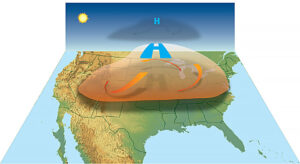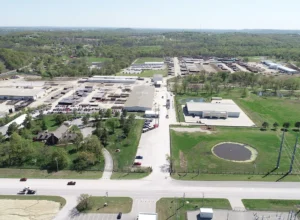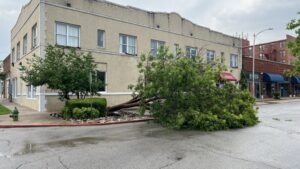Simply put, an ecosystem is a community or group of living organisms that live in and interact with each other in a specific environment.
The difference between ponds and lakes is somewhat unclear, but generally speaking, lakes are normally much deeper than ponds and have a larger surface area. All the water in a pond is in the photic zone, which means that ponds are shallow enough to allow sunlight to reach the bottom. Thus, plants grow on the bottom of ponds as well as on the surface.
The scientific term for a lake or pond ecosystem is a lentic ecosystem (lentic refers to stationary or relatively still freshwater, from the Latin lentus, which means “sluggish”). A pond or lake ecosystem includes biotic (living) plants, animals, and micro-organisms, as well as abiotic (nonliving) physical and chemical interactions.
A typical lake has distinct zones of biological communities linked to the physical structure of the lake. The littoral zone is the near shore area where sunlight penetrates all the way to the
sediment and allows aquatic plants (macrophytes) to grow. Light levels of about 1% or less of surface light determines the depth of this zone. The euphotic zone of the lake is the layer from the surface down to the depth where light levels become too low for photosynthesizers.
In most lakes, the sunlit euphotic zone occurs within the epilimnion which is the layer of water that interacts with the wind and sunlight, so it becomes the warmest and contains the most dissolved oxygen.
However, in unusually transparent lakes, photosynthesis may occur well below the thermocline (the transition layer between warmer mixed water and cooler deep water) below, into the perennially cold hypolimnion (the lower layer of water in a stratified lake, typically cooler than the water above and relatively stagnant).
The higher plants in the littoral zone are a food source and a substrate for algae and invertebrates, and provide a habitat for fish and other organisms.
The limnetic zone is the open water area where light does not normally penetrate to the bottom.
The bottom sediment, known as the benthic zone, has a surface layer abundant with
organisms. This upper layer of sediments may be blended by the activity of the
organisms that inhabit that region, usually to a depth of 2-5 cm in rich organic sediments.
Most of the organisms in the benthic zone are invertebrates, such as insect larvae
or small crustaceans.
The productivity of this zone largely depends upon the organic content of the sediment, the amount of physical structure, and in some cases, upon the amount of predatory fish activity. Sandy substrates contain relatively little organic matter (food) for organisms and poor protection from predatory fish. Taller plant growth is typically sparse in sandy sediment, because the sand is unstable and nutrient deficient. A rocky bottom has a high diversity of potential habitats offering protection from predators, a substrate for attached algae, and pockets of organic “ooze” (food). A flat mucky bottom offers abundant food for benthic organisms, but is less protected and may have a lower diversity of structural habitats, unless it is populated by taller plants.
The biodiversity of freshwater lakes is being threatened by human activities at an ever-increasing rate. Habitat loss, eutrophication, acidification, chemical contamination, global warming, and exotic species that eradicate native species are just some of the factors that have directly or indirectly impacted lentic systems.The combination of these menaces and the dearth of freshwater habitats make lentic systems one of the most endangered on the planet.










